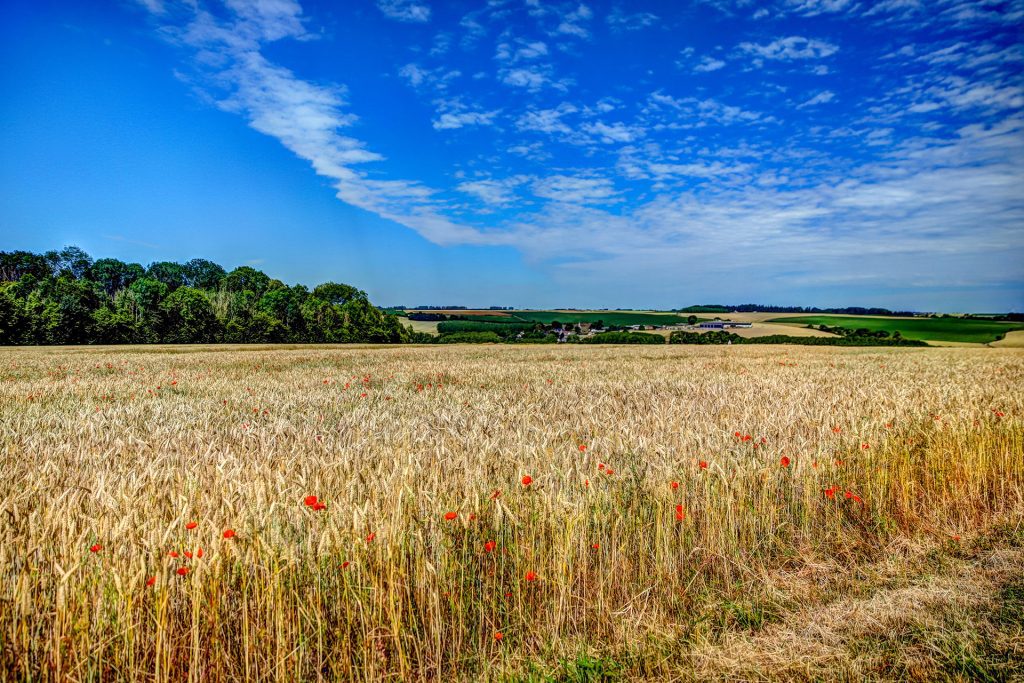Somewhere in France
Richard Wain was educated in Llandaff and went on to become a decorated hero of World War 1. This is the story of how he earned his prestigious medal on a fateful morning in 1917
The Victoria Cross is the highest and most prestigious award of the British honours system. Awarded for valour ‘in the presence of the enemy’ to members of the British Armed Forces, the medal has only been awarded 1,358 times to 1,355 individual recipients since its introduction by Queen Victoria in January 1856.
And it was in February 1918 that one of these medals was awarded to a 20 year-old local man by the name of Richard William Leslie Wain.
Born in Penarth, Wain went on to be educated at Llandaff Cathedral School and then went on to St Bees College in Cumberland, where he became a member of the Officer Training Corps. On the outbreak of the Great War, despite having won a scholarship to attend Oxford University, he joined the Territorial Army.
Like most soldiers of that time, he had very limited battle experience by the time he arrived in German-occupied France, but in July 1915, he was commissioned as an officer in the Manchester Regiment. And nearly a year later, in July 1916, Wain was to taste the horrors of war in northern France for the first time.
Serving as an officer of 17th Battalion of the Manchester Regiment, his unit suffered severe casualties as they successfully captured the village of Montauban. All of the company’s officers were either killed or wounded, including Wain himself. It was the opening day of the Battle of the Somme.
It took the rest of the year for Wain to recover from his injuries and in January 1917, he transferred to the Tank Corps and joined A Battalion.
Before World War I, motorised vehicles were still relatively uncommon, and their use on the battlefield was initially limited, especially of heavier vehicles. Armoured cars had proved useful in open land such as in deserts but when it came to more challenging terrain, both sides were faced with the dilemma of moving heavy vehicles across tough land.
The adoption of caterpillar tracks offered a new solution to the problem. And it was Winston Churchill, the First Lord of the Admiralty at the time, that pushed for the idea of the new British tanks before the Germans came up with their own versions.
For secrecy, six new tank companies were assigned to the Heavy Section of the Machine Gun Corps, where Wain and his colleagues were based.
They took part in the Battle of Messines in June 1917; Wain commanded tank A5, and he reached his final objective and destroyed a number of German machine guns which that were located in three concrete emplacements.
Despite one of his crewman wounded by shrapnel, Wain successfully brought his A5 back to the rallying point.
Following his success, Wain was chosen to lead three tanks into action at Cambrai in November 1917. The town of Cambrai was an important supply centre for the German Siegfriedstellung (which was referred to by the British as the Hindenburg Line); capture of the town and the nearby Bourlon Ridge would threaten the rear of the German line to the north.
By this point, Wain was Captain in command of Number 1 Section, 1 Company of A Battalion. And at 6.20am on 20th November, Wain rode in tank A2 (named Abou-Ben-Adam) as Section Commander.
In the opening stage of what became known as The Battle of Cambrai, 378 British tanks advanced into enemy territory, gaining four miles of land.
Wain’s unit then advanced to the second objective behind the Hindenburg Line at the bottom of the ridge in the direction of Marcoing. Shortly after 8:50am, Wain’s tank Abou-Ben-Adam was crossing the ridge near Good Old Man Farm when Wain spotted a group of British infantrymen who were pinned down by German machine gun fire.
Wain attempted to draw German fire away from the men but his tank was hit by German mortars. Six of his crew were killed. Though bleeding heavily from his wounds, Wain ushered away the stretcher bearers. Instead of retreating, Wain rushed from behind the tank with a Lewis gun, and captured the strong point; he took about half the garrison as prisoners.
Despite being badly wounded, Wain continued to fire at the retreating enemy. But his luck ran out when he was shot in the head. He died instantly. He was 20 years old. Thanks to Wain’s actions, the British infantry were able to advance and successfully retain some of the ground captured in the north.
Wain was buried alongside the wreck of the Abou-Ben-Adam. Sadly, the location of his burial place was lost and has never been found. His name is however, commemorated on the Cambrai Memorial to the Missing in Louverval Military Cemetery. He is also commemorated at the War Memorial at Llandaff Cathedral.

His Victoria Cross citation read:
For most conspicuous bravery in command of a section of Tanks. During an attack the Tank in which he was, was disabled by a direct hit near an enemy strong point which was holding up the attack. Capt. Wain and one man, both seriously wounded, were the only survivors. Though bleeding profusely from his wounds, he refused the attention of stretcher-bearers, rushed from behind the Tank with a Lewis gun, and captured the strong point, taking about half the garrison prisoners. Although his wounds were very serious he picked up a rifle and continued to fire at the retiring enemy until he received a fatal wound in the head. It was due to the valour displayed by Capt. Wain that the infantry were able to advance.
The London Gazette, 13 February 1918

